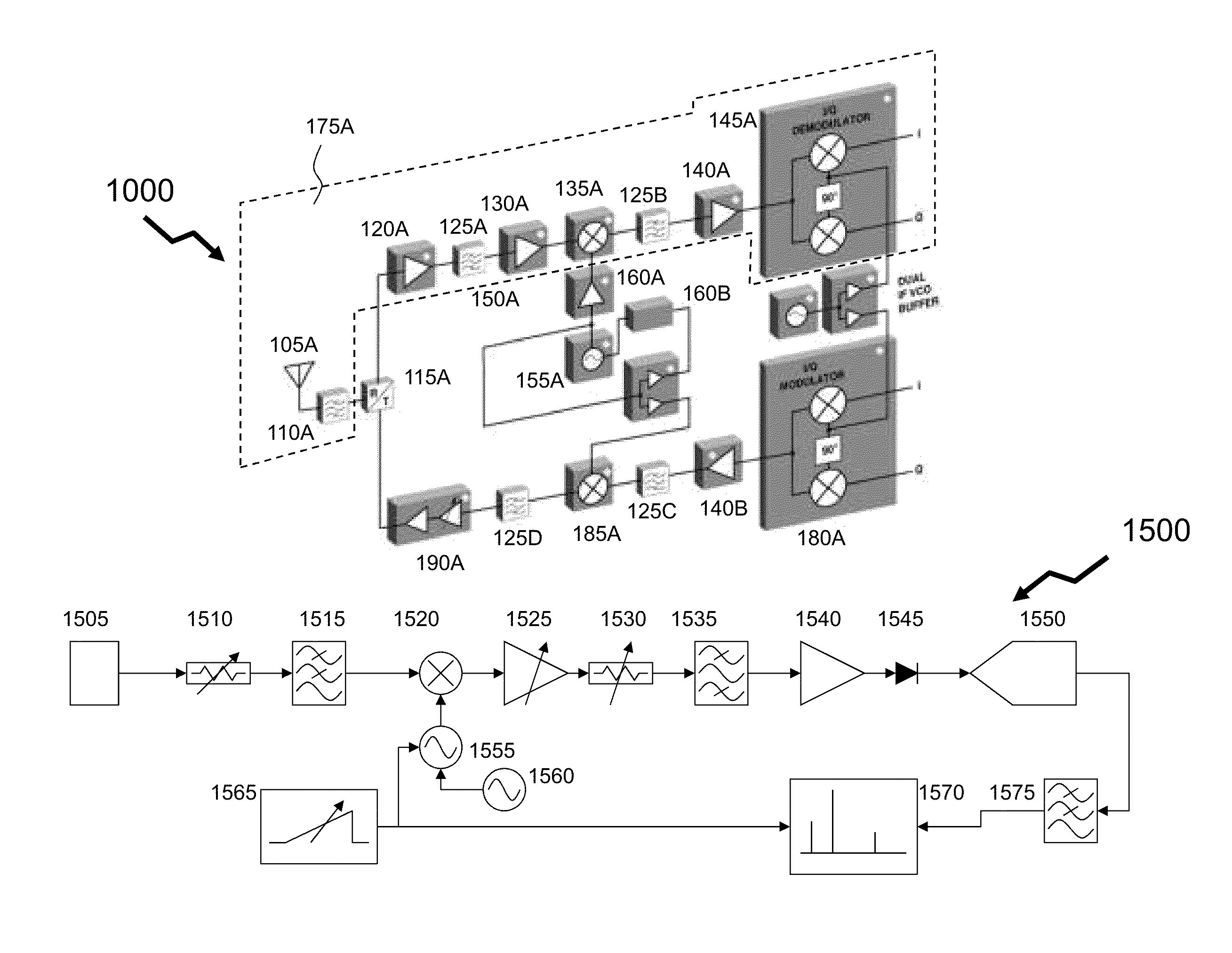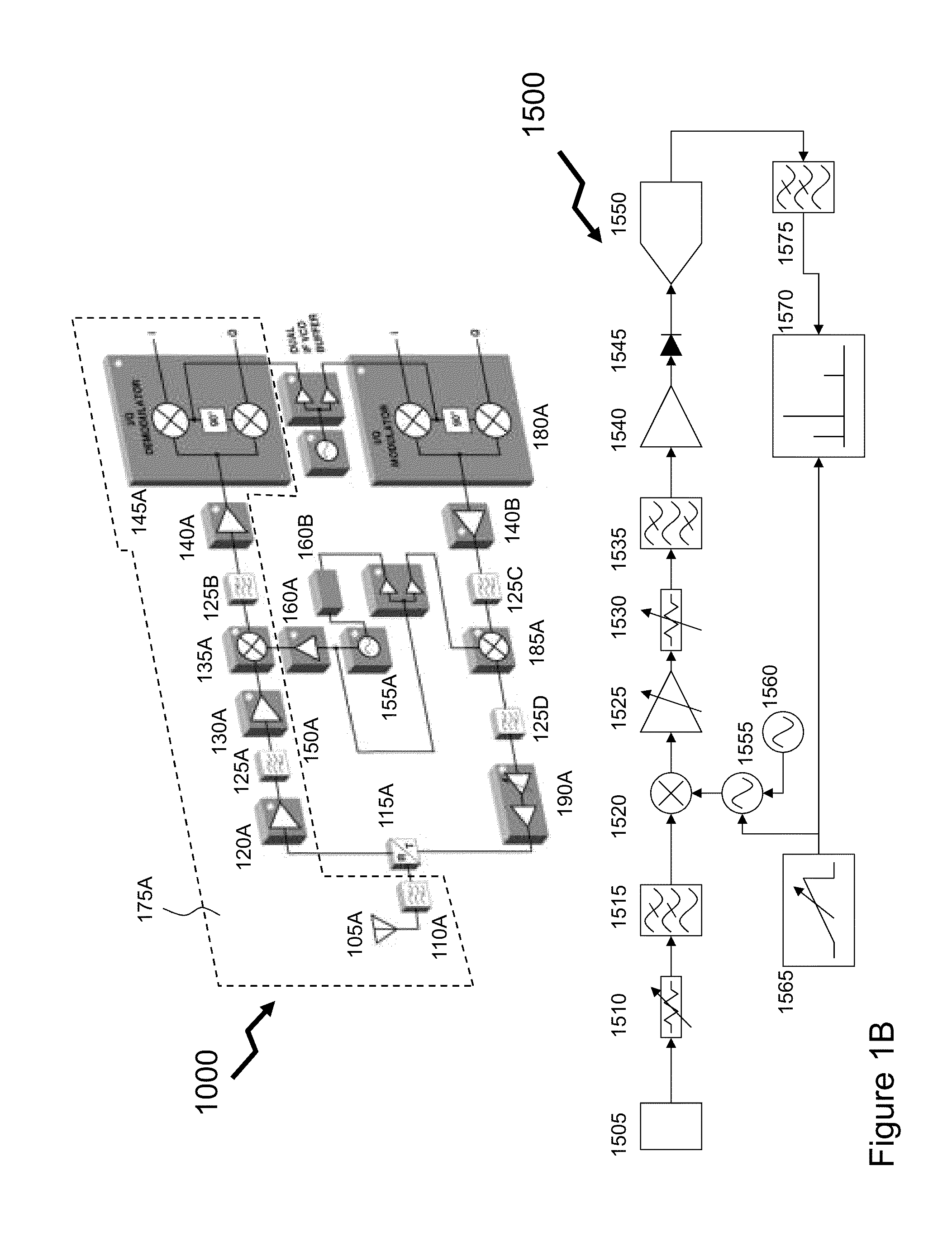Radio frequency receiver system for wideband signal processing
a receiver system and radio frequency technology, applied in the field of radio frequency receivers, can solve the problems of increasing complexity of new data-centric wireless systems, increasing the complexity of wireless physical layer designs, and increasing the cost of deploying a wireless system by half every five years, and achieves fast computational processing, high speed, and easy operation.
- Summary
- Abstract
- Description
- Claims
- Application Information
AI Technical Summary
Benefits of technology
Problems solved by technology
Method used
Image
Examples
Embodiment Construction
[0069]The present invention is directed to RF receivers and more specifically to broadband receivers for real-time signal analysis.
[0070]FIG. 1A depicts a network 100 accessed by a plurality of wireless devices. The network 100 may be formed from a plurality of sub-networks, of which first and second sub-networks 110A and 110B are identified. First sub-network 110A may for example be a transport network associated with a service provider wherein the primary communications are provided through a first telecommunications standard, such as GSM for example, relating to cellular networks. Second sub-network 110B may for example be associated with Internet Protocol (IP) traffic according to a second telecommunications standard, e.g. Internet Protocol v6. Network 100 may therefore be formed from a combination of wired and wireless infrastructure that provides a wireless interface for wireless devices according to one or more standards. For example, first sub-network 110A being GSM based in...
PUM
 Login to View More
Login to View More Abstract
Description
Claims
Application Information
 Login to View More
Login to View More - R&D
- Intellectual Property
- Life Sciences
- Materials
- Tech Scout
- Unparalleled Data Quality
- Higher Quality Content
- 60% Fewer Hallucinations
Browse by: Latest US Patents, China's latest patents, Technical Efficacy Thesaurus, Application Domain, Technology Topic, Popular Technical Reports.
© 2025 PatSnap. All rights reserved.Legal|Privacy policy|Modern Slavery Act Transparency Statement|Sitemap|About US| Contact US: help@patsnap.com



